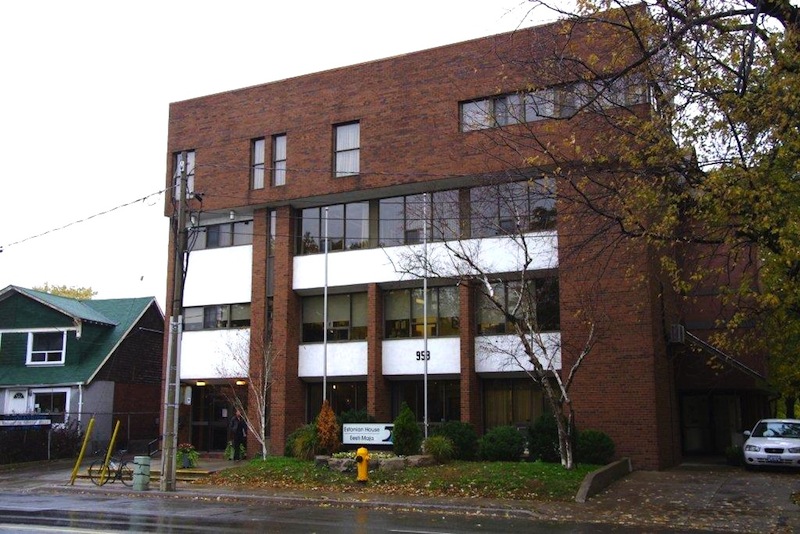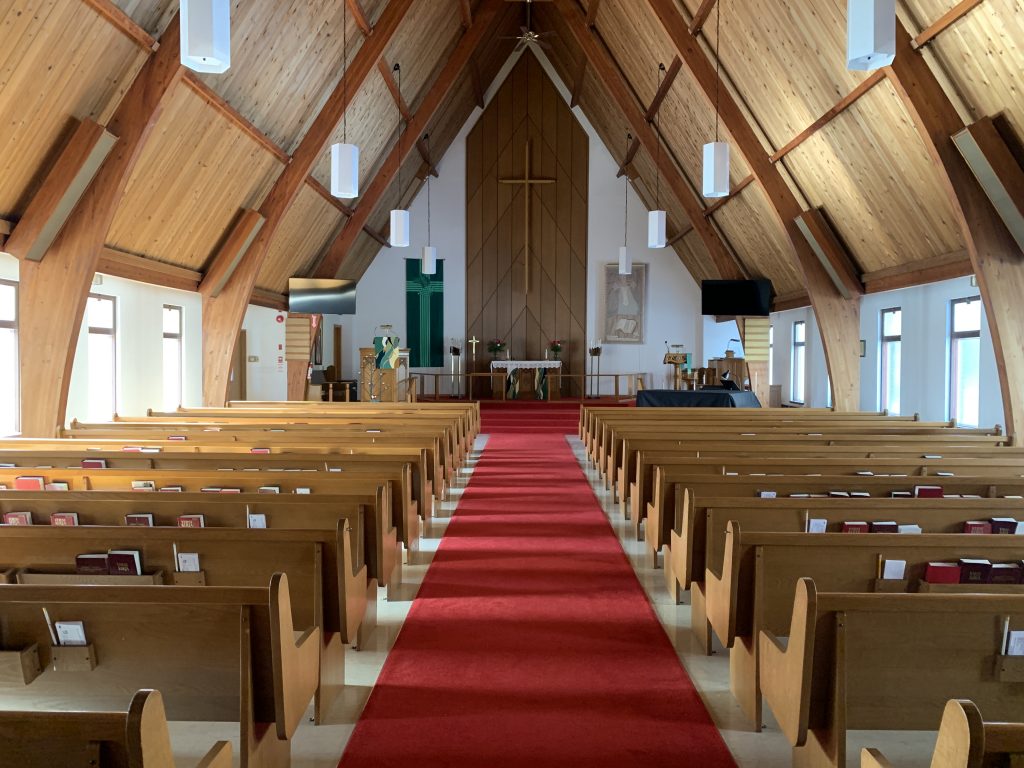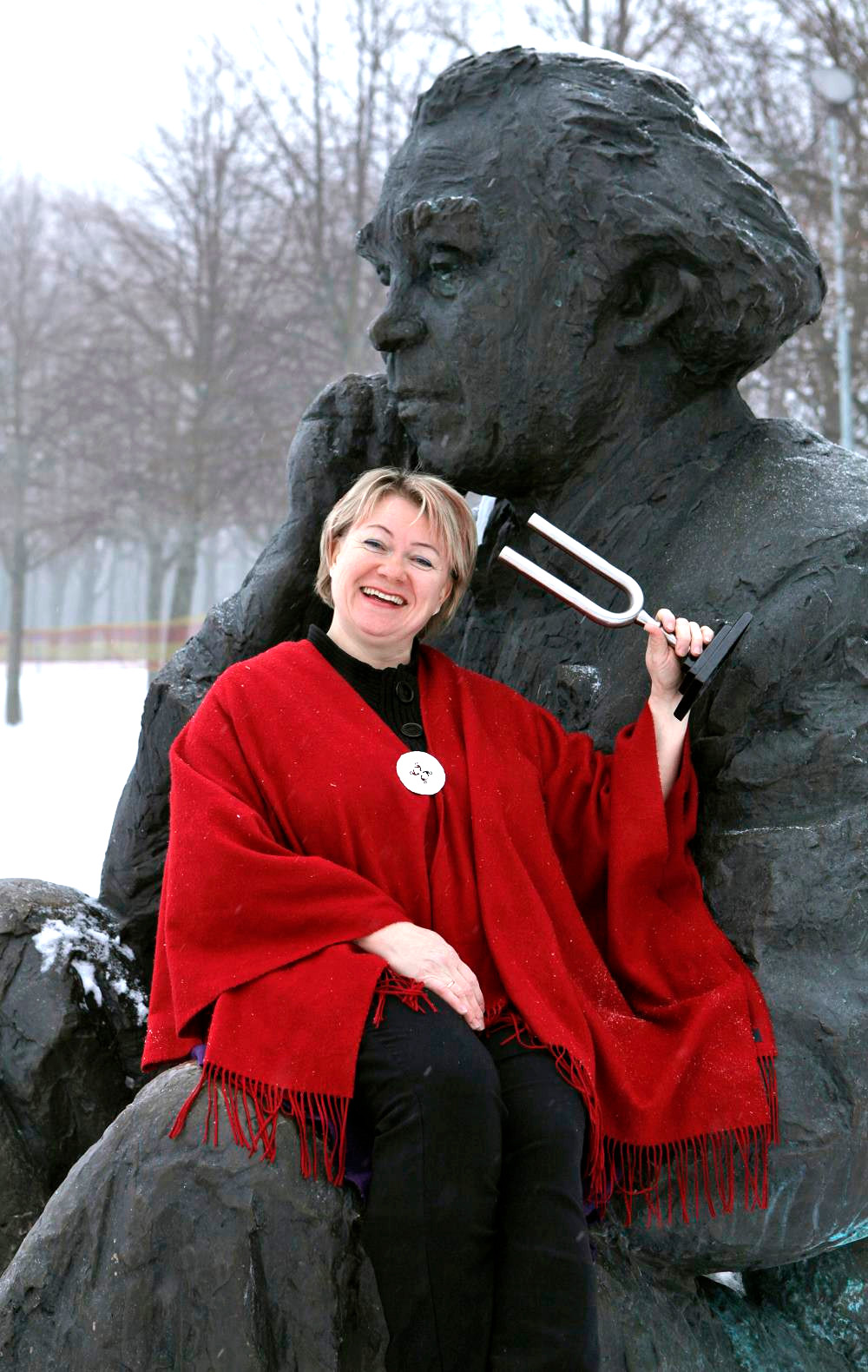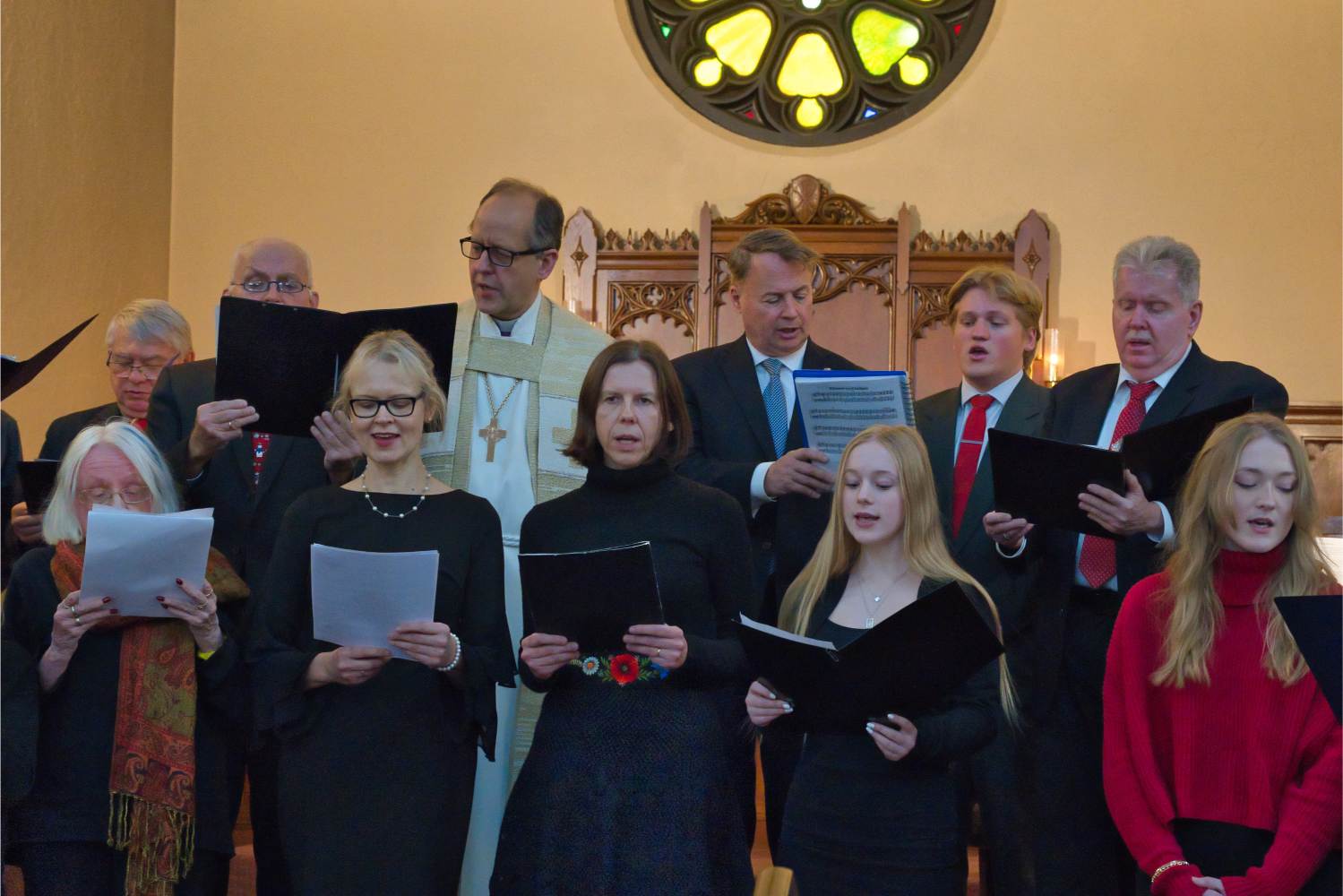Since, as an art historian, I have taught architecture at the university and asked the students to write analytic projects about important buildings in Toronto, I will discuss here some of the questions I have about the new proposal that may also interest our Estonian community.
The project is likely the best possible on this site, and apparently it also satisfies the wishes of the clients, who proposed it. We know that the architect must always take into account the needs and requirements of clients as well as the city by-laws and do the best possible between these.
An intent has been made to buy the parking lot from the city, which is located between TC and the 11 Madison Avenue building and under which runs the subway. The price of the lot, how to finance the purchase and which organizations, as well as how much they would put out for the parking lot, has not yet been made public. The project description merely notes that it is possible only with the sale of the Toronto Estonian House. Considering that EH now has nothing to put out for the purchase of the lot, a contribution from EH would be possible only with the taking on of a new loan or a legal contract. With this it should be reckoned that the existing bank loan, which the EH board has already taken out and used for its unsuccessful projects, will increase. Would this put EH, which now belongs to the shareholders, in a state of duress?
Underneath the car park is the subway line, which makes a basement for the proposed building impossible. It can be assumed that this determines also the height limits on the building, and so the edifice is designed as only two-storey. In addition there are city by-laws which do not favour building over an entire lot from one end to the other, hence the large open square in front of the Madison Avenue side of the building. The preliminary project must be presented to the Toronto planning department, to get a permit for going ahead at all. Hence there must be compliance with the respective ordinances. These are complicated problems, like the complete absence of a parking lot, about which there has already been much talk in our web commentaries. Another problem on the small lot is access for cars to the back of the restaurant located on the east side of TC, to the TC basement floor and the area for the garbage bins which are emptied by large city trucks. Here a solution is found in the south wing of the new planned project, which would take the entire first floor of the edifice's south wing under the roadways. Vehicular access to the garbage bins and where they would be kept, is not clear to me. Obtaining a building permit without a place for garbage bins is questionable.
The project is presented to us in bird's eye view as seen from above, which is customary. From this perspective the planned edifice is F-shaped, with the south wing tucking underneath itself the entrance for cars to the TC basement and the rear side of the restaurant. We have to remember, though, that we approach the edifice from below walking, as pedestrians, not in an airplane. We enter the edifice from the street into the square in front of it, surrounded by the three vertical walls with a lot of glass. Analogous vertical, partly glass walls can be seen in googling Alar Kongats' other building designs.
I drove by the parking lot in question, to check on the overall impression and to compare it with the sketch. I do feel that the actual lot is much smaller than the one presented in the sketch. I recommend to others as well a personal visit to the site, to compare your street level impressions with the project which is being presented to us. It used to be said in Estonia that a pig should not be bought in a bag. Hence we have to think for ourselves and make very clear to ourselves exactly what we are being offered. The difference in the size of the people on the proposed drawing, where near the far wall the tables and figures are very tiny and seemingly distant, helps create the larger impression and spaciousness of the square that is surrounded by the edifice. The actual present parking lot does not allow for such a large premier square to the building.
The earlier unsuccessful projects of the current EH board, for which loans have been taken, dealt with the demolition of EH and its replacement with a high modern condominium building. This brings to mind the polemic in Toronto in 1965, when there were some who wanted to demolish the Old City Hall, designed by architect Edward James Lennox and completed in 1891, and to replace it with a new and modern piece of the Eaton Centre. Toronto's concerned citizens formed the organization „Friends of Old City Hall” and were able to save an historically very significant old city hall. Is this not analogous to the creation of the present „Friends of Estonian House”, who have voluntarily done repairs to EH and found an opportunity for significant funding from the city to replace the leaking roof? Here too is a polemic, in which the board's English-language opposition can be read on the EH web home page where it has been for several weeks, even after clarification from the „Friends of Estonian House”. Is the EH board hoping to negatively influence financial support from the city? There is a storm in the teacup of the Toronto Estonian diaspora!
Estonian House has since the 1960's been home to Estonian society. Tartu College is also important, our academic home with an Estonian-language newspaper and archive, but at Estonian House are our schools, guides and scouts, youth activity and much more, not to mention the gatherings with a stage in the large hall. In the Estonian House there is a gift shop, art exhibits, until recently even a café-restaurant, serving popular Estonian foods. There is also an Estonian bank, insurance firm and consulate.
For all this a former schoolhouse, the much rebuilt Chester Public School, built in 1891, has been very suitable. We are thankful to those who made possible this house for us. For the existence of Tartu College we owe our gratitude to Elmar Tampõld, who conceived the structure and founded the Chair of Estonian Studies, and whose foresight made possible the existence there also of an archive of Estonians abroad and the newspaper „Estonian Life”. These two are not interchangeable and they cannot be compared. They are both needed by Estonian society and I believe, our society is not dying out so soon. The Estonian House rooms are in constant use and the carpark is filled with cars for events.
It seems to me that the authors of the project that has been presented to us belong in large part to the same Toronto Estonian exile community's so-called middle and younger generations and also to the same group of friends, having gone through Estonian supplementary schools, scouts and guides, and perhaps also folk dancing groups and choirs. At current cultural events at EH and TC, where I have gone frequently, I have not seen them much. They are apparently not active in that societal core, to which Estonian House and many cultural events belong. Are they knowledgeable about the needs of the larger Estonian community which at present are met entirely at Estonian House? In addition, though, to the middle generation belong also the activists on the Metsaülikool (Forest University) executive, the supplementary school teachers, scout and guide leaders, and those who are active in caring for the pensioners as well as the present Friends of Estonian House.
In Estonian society, in the diaspora, there is also a succeeding younger generation, whose ethnic identity merits some consideration. They are at present attending the Estonian schools and taking part in the activity of the scouts and guides, choirs, and folk dancing. To their parents access to the present Estonian House is essential.
We also have large numbers of an older generation who are not disappearing any time soon and who at present make up the main public at Estonian events in Estonian House and Tartu College, are EH shareholders, Bank members, and principal donors to the Foundation.
It should be asked, in what way the newly planned but smaller project, which would begin to replace the present Estonian House, responds to the present and near-future needs of Toronto's Estonian community. Absent are a parking lot and a large hall with seating for 400 and a stage, both of which are at present and in the near-future actively in use. The Estonian school and kindergarden use at present about ten classrooms as well as the gallery hall (EH small hall). On the occasion of larger events, in which parents also participate, the large hall is used. The Society of Estonian Artists in Toronto (EKKT) and Estonian Art Committee exhibitions are held in the gallery hall, for the creation of which money was donated by the Osvald Timmas Memorial Fund. Until recently there was a restaurant in EH where we and our friends were served popular Estonian foods. In Estonian House there is a store where it is possible to buy books, musical recordings, films and other Estonian cultural objects. The guides and scouts have large rooms with storerooms and archives. The EM art collection has its own storeroom. Cupboards and storerooms abound in Estonian House and they are all in use.
In addition the new project must make a place for the Estonian bank, consulate, Foundation, and EH board rooms. How many and where? What will happen on the square in front of the edifice? Surely it will not remain empty? According to the plan we see chairs and tables, but is a café or bar planned for the people sitting there? A dining place needs a kitchen and washrooms, without which it is not possible to get a building permit. We ask, for what will the new plan have space, and what must be abandoned? What are the dimensions of the edifice? It is possible to use the house at 11 Madison Avenue, but that too is old. When were its roof, pipes, and heating last refitted? The house was since 1991 the Tengye Ling Buddhist Temple, having belonged before that to a church and been used for offices. What major repairs were done? At present the house is empty, so it seems it has not been possible to find for it a suitable purpose nor is it clear how the edifice is connected to the new project.
The Estonian society must now decide what it needs, how many rooms and what events are important as well as whether the new smaller plan in the heart of the city responds to the minimal needs of the society. It is also questionable, whether the selling price of the Estonian House would cover the construction of the newly planned edifice. Here perhaps the needs of the Estonian community do not coincide with the needs of the present EH board.
Perhaps the quick sale of Estonian House and the board's decision to not repair it and let it deteriorate, are not at all practical. Of course Estonian House needs repairs, including its leaky roof, later also its pipes and heating. But all that need not be done at once and right away. The main thing is to maintain the rental space. If the Toronto Estonian public is at present ready to help out, if it is possible to get help through city projects, is it reasonable to start selling the house? The planning for the new project near Tartu College can continue without the sale of Estonian House but then other sponsors should be sought out. The search could be widened outside Toronto and even Canada to the whole continent, and maybe also some Foundation houses could be sold. The question is, whether we want to save and maintain Estonian House for the Toronto Estonian community or we are indifferent and resigned to the loss of many functions. It is certain, that with the loss of Estonian House there will be the loss of a large part of our society.
Eda Sepp, Toronto
Translated by Alja Pirosok
Loe lisaks:
- Mõtteid Eesti Majast ja uuest projektist
- Eesti Maja vabatahtlike tähelepanekud
- Observations while volunteering our time at Eesti Maja
- OPPORTUNITY FOR NEW TORONTO AREA ESTONIAN COMMUNITY CENTRE




